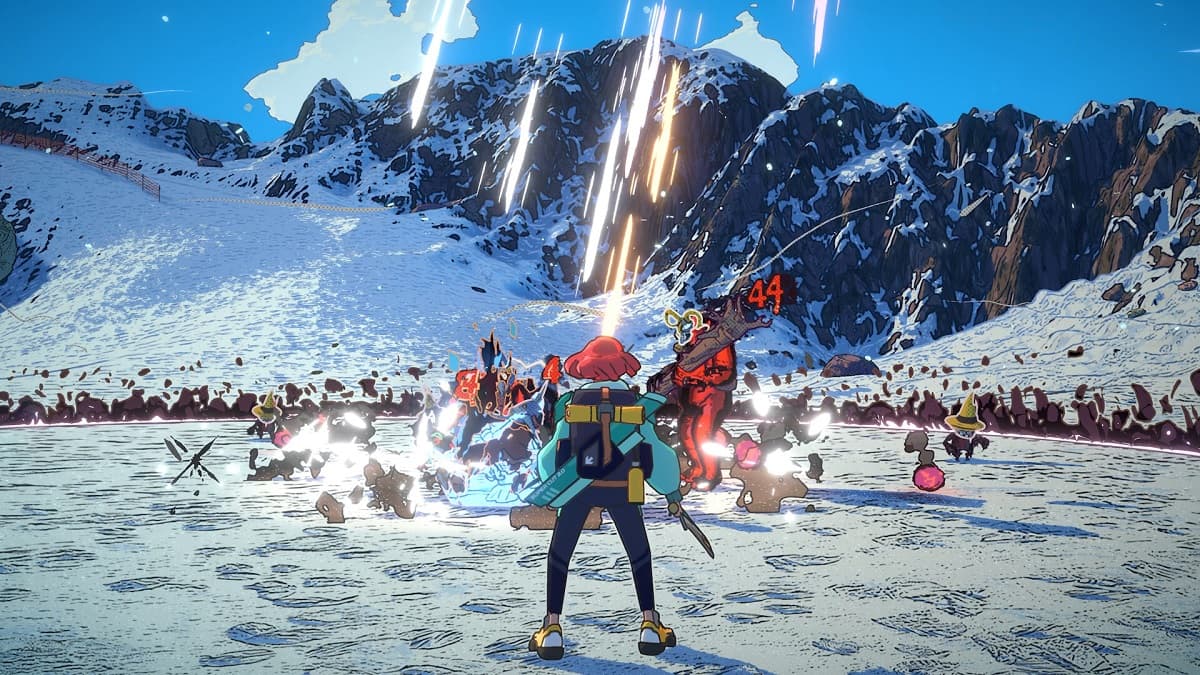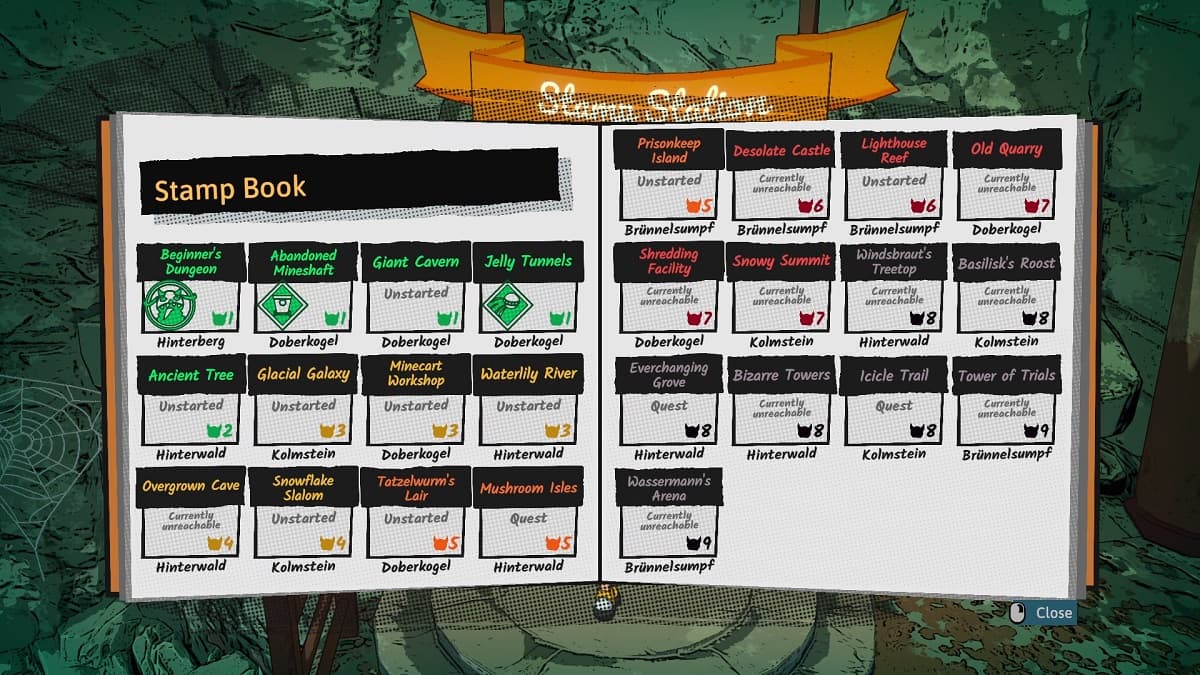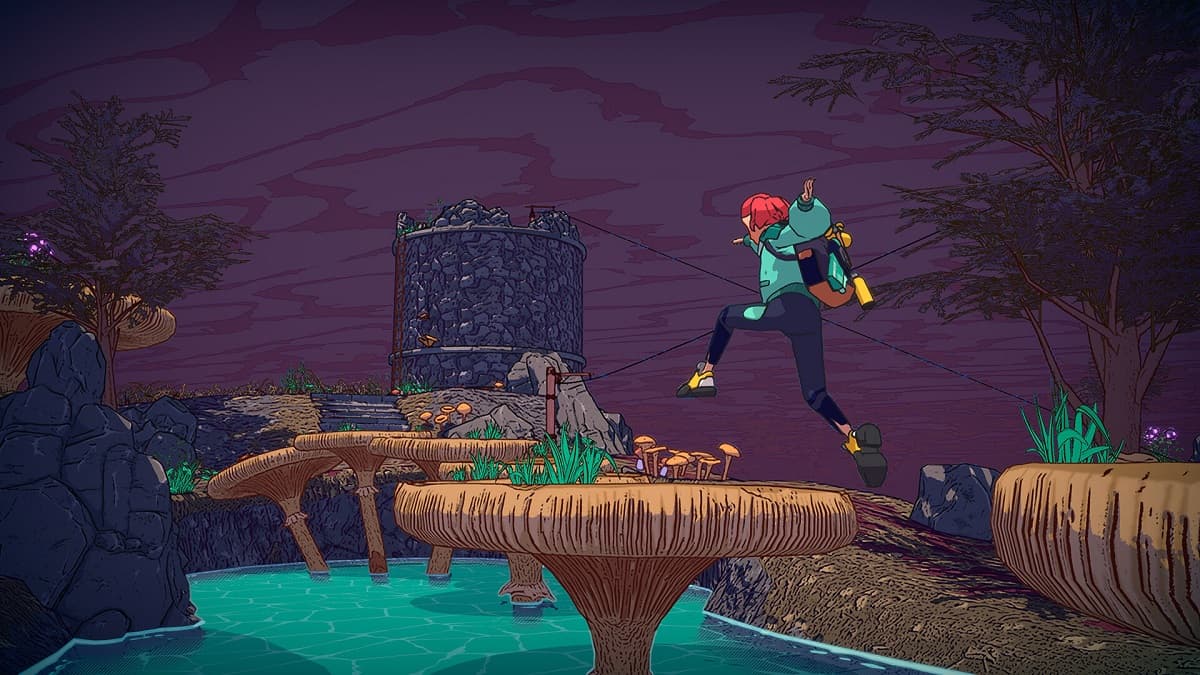Action-packed dungeon diver Dungeons of Hinterberg takes a refreshingly light look at a concept that tends to be story heavy. Instead, you’re entering the battle against monsters for the sake of unwinding the stress of your day-to-day life. Step into Luisa’s shoes and explore the unusual dungeons that popped up in Hinterberg!
The design of Dungeons of Hinterberg is a Frankenstein’s monster in the best way. There are RPG elements, the action of combat and dungeon crawling, and even social simulation features. While the combination can feel like a lot to take in when you first jump into the game, having the story on the simple side and not having an open world map helps as you’re able to focus on learning the mechanics of the game. But let’s take a deeper look at each piece and how they fit together to create this delightful experience.
Exploring the Dungeons Around Hinterberg

True to the title, the focus of Luisa’s vacation is heading into the 25 dungeons that exist around the Hinterberg area and earning stamps as marks of completion. The dungeons contain a combination of enemies and puzzles. I love this set-up because it feels like you’re doing classic Zelda dungeons with a heavier emphasis on puzzles in some dungeons rather than combat. Since time moves in-game, you can do a dungeon each day, but that doesn’t mean you should run a dungeon every day. This is because taking a day to rest at scenic spots can boost your health.
If you want a challenge in combat, or if you want easier combat to focus on the puzzles, then you can adjust the game’s difficulty to suit your tastes. The dungeons are grouped up in areas around skill shrines, which give you magic skills. As you may expect, that means that the skills you learn in that area play a big role in solving the puzzles of the dungeons there. Of course, the magic skills aren’t just for puzzles, and you can use them to attack enemies as well. Overall, the dungeon designs are fun. I like having puzzles that make you stop and figure out how each trigger interacts with the area around it and what it changes.
Befriending the People of Hinterberg

The social simulation elements actually play a role in helping strengthen Luisa for combat, which makes it important to go around and raise your relationship with other characters. As your relationships improve, you unlock perks depending on which character you interact with. If you want to know which character gives you specific perks, you can look in the character guide that Alex gives you during your first days.
With the in-game time system, raising relationships is done during the evening section. Deciding to spend time with a character takes the entire evening, and you automatically return to your room at night afterwards. That means you need to do any shopping before you speak with a character to spend time with them, because you won’t get another chance to shop that day once you start spending time with somebody.
Not every character gives you combat perks. Travis is a reporter who unlocks Photo Mode the first time you spend the evening with him. However, this is more of an exception than the rule because I find myself getting more perks that are useful for combat and getting through dungeons. As an example, Marina increases your endurance so you can dodge more, but then there’s a dog who—instead of giving you a buff—leads you to a hidden dungeon.
Combat and Movement Mechanics in Dungeons of Hinterberg

The combat is similar to games like Wuthering Waves. It has a hack-and-slash feeling to it, and you won’t miss monster loot since there’s a little glowing pillar on the ground where they drop. Using magic and special physical skills can take a bit to get used to. However, combat wasn’t the mechanic that took the most time to adjust to.
I found the climbing aspect to be finicky and strange at first. You have to move your joystick in the direction of the ledge you want to jump to, and then jump when the prompt is over that ledge. Of all the mechanics in the game, this was probably my least favorite along with the way that you jump automatically by running to the ledge. I find that this results in feeling a lack of freedom in movement, and I generally prefer having more control over jumping, dashing, and climbing.
Dungeons of Hinterberg—The Bottom Line

Pros:
- Light, simple story premise
- Rewards for socializing with NPCs
- Easy to learn combat system
Cons:
- An open world could’ve brought exploration opportunities
- The climbing and jumping mechanic is finicky
- Lack of freedom in movement and exploration
Overall, playing Dungeons of Hinterberg is a fun experience. It’s a nice break from games with darker themes. The artwork, too, adds levity to the feeling of the game. Luisa is a relatable character, too. She went into a career and lived the way she thought was right, but it led to her realizing that she doesn’t actually enjoy how her life turned out, and she decides that slaying monsters is the break she needs to fight off her burnout. All-in-all, I think this is a game worth trying if you enjoy a mix of dungeon diving, action, and social simulation.









Published: Jul 18, 2024 06:08 am